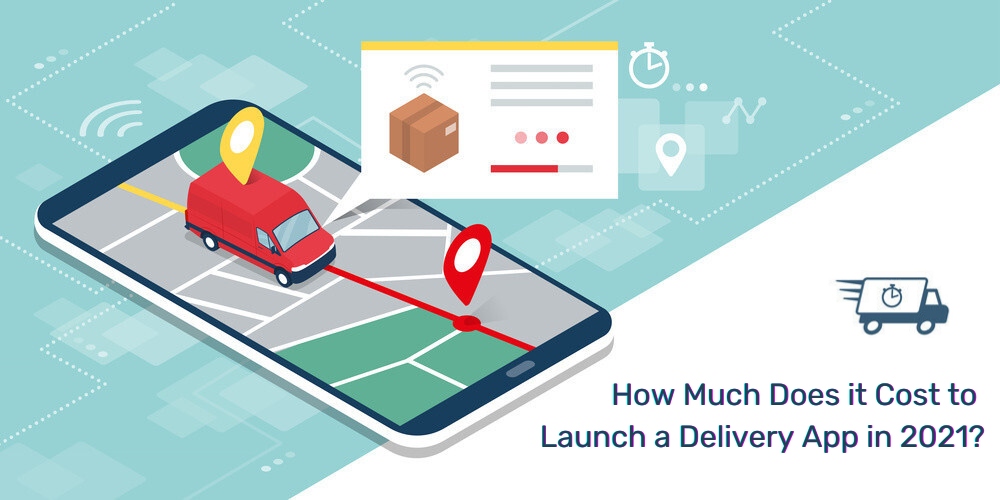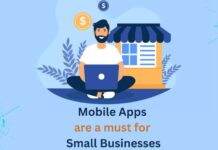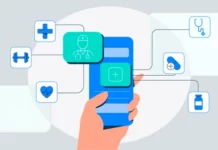The digital world we live in now has witnessed a sea change over time. Comfort and convenience are now at our fingertips due to the influx of delivery apps for food, groceries, alcohol, and medicines. These apps can be utilized 24×7 by users on compatible devices.
These delivery apps utilize the services of gig workers who function as independent contractors with flexible terms and conditions. As part of the booming on-demand economy, entrepreneurs benefit from the immense scalability of delivery app solutions.
Some insightful statistics about the phenomenon of Delivery apps are
- Online food delivery apps are expected to reach a humongous value of $154.34 billion by 2023 with an 11.51% annual growth rate.
- The value of Online grocery delivery apps is expected to cross $129.54 billion by 2025. The demand for e-grocery shopping will grow by 24.8% every year.
- The global alcohol delivery industry is predicted to add $3 billion in sales by 2024 with a 24% growth rate.
- The global medicine delivery market will earn a whopping $109.2 billion by 2025 by growing 14.8% annually.
The extensive process that entrepreneurs have to follow for launching a Delivery app is
- Research the current market conditions – The entrepreneur has to study the existing market scenario for launching delivery apps. They can know the strategies followed by other delivery apps in the industry. Delivery apps can be immensely successful in highly populated and developed countries where consumer spending is very high.
- Finalize the operational scope – The entrepreneur needs to decide the operational plan for the delivery app solution. It is ideal to launch it in a few cities initially and then scale it up to cover many regions or an entire country after a certain period.
- Hire a competent team – The delivery app solution can make a big impact in the market with the efforts of skilled members. Different professionals like mobile app developers, marketing experts, finance managers, project managers, QA testers, and technical support executives are required.
- Prepare a list of features and functionalities – The delivery app needs to have important features like real-time order tracking via GPS integration, acceptance of multiple payment methods, a rating and review system, an integrated referral program, an advanced search, and filter option, 24×7 customer support, and the availability of discounts and offers.
- Set up the user interface – The delivery app solution requires a friendly user interface that can be comfortably used by customers of all age groups and sections of society. It must contain easy-to-handle tools and widgets for convenient completion of tasks. Animation and multimedia elements can be added to attract more consumers.
- Involve in front-end development – The UI/UX design is integrated as part of the front-end of the delivery app. A massive reach can be achieved in the market if the delivery app solution is cross-platform compatible (Android, iOS, and Web). This ensures more flexibility and a seamless ordering experience for the customers. Tools like AngularJS, Bootstrap, CSS, HTML, and jQuery are utilized.
- Focus on back-end development – The maintenance of the operational server and database is taken care of at the backend. Based on the service request of the users, the required information is shared from the backend. Competent backend developers will use technologies like MySQL, Python, PHP, and Ruby.
- Rigorously test the solution – The delivery app is comprehensively tested by analyzing its load handling capacity, performance, and speed. Technical bugs, glitches, loopholes, and other vulnerabilities are removed from the app by the QA testers.
- Launch it officially in the market – The delivery app solution is launched in the target market at an appropriate time to receive maximum business traction.
- Conduct digital marketing campaigns – Promote the benefits of the delivery app across social media platforms, online forums, and publish paid advertisements to increase the positive buzz and trust.
What are the factors that have an impact on the cost of establishing a Delivery app solution?
- The time allocated for the development of the Delivery app, which can take a few weeks or some months depending on the business intricacies of the client.
- The complexity of features (basic and advanced) included in the Delivery app.
- The tech stack used for the front-end, back-end, and maintenance.
- The hourly or monthly rate imposed by the developers, which varies as per their location and market conditions.
- Third-party API integration for live chat, navigation, sharing data, and payment processing.
- The level of customization needed by the business firm as they would want to display their brand name, color theme, and logo.
The futuristic technologies that can be integrated into a Delivery app are
- Artificial Intelligence (AI) – AI can play a big role in understanding customer behavior perfectly. It uses predictive analytics and models to know the ordering preferences of shoppers and their likes, dislikes, and interests. This enhances the overall user experience.
- Smart Assistants – Smart assistants like Alexa and Google Assistant can be utilized for offering a seamless online ordering experience. Orders can be done by announcing instructions via voice and details of previous bookings can also be stored.
- Delivery fulfillment through drones and robots – Drones can be used to deliver parcels covering a few areas (a specific radius). Customers can enter a unique code to get their orders after the drone arrives in their location. Robots powered by automated software can be utilized for maintenance and warehouse management. Autonomous robots can deliver orders quickly by using the shortest and interruption-free routes.
- Augmented Reality (AR) and Virtual Reality (VR) – AR can be a game-changer in conducting online marketing campaigns by offering a one-of-the-kind experience for the customers by using 3D elements for better brand awareness. VR is used to promote various products and services by facilitating real-time interaction through multiple sensors.
- Big Data – Big Data analyzes large volumes of data in an easily understandable manner. The entrepreneur gets valuable information about different aspects like average delivery time, overall customer rating, traffic on roads, order history of the shoppers, and social media analytics.
Final Thoughts
Entrepreneurs can acquire fame in no time by launching a multi-services delivery app in the market by following the above-mentioned processes and technologies. More changes can be expected in the functioning of the delivery app solutions in the future depending on customer behavior and regulatory guidelines issued by government authorities across the world. The entrepreneurs can earn huge revenue from delivery apps through subscription plans, advertisements, transaction execution fees, cancellation charges, and order processing fees.















